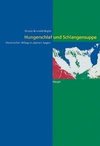
-
 Anglický jazyk
Anglický jazyk
Slavic ethnic groups
Autor: Source: Wikipedia
Source: Wikipedia. Pages: 107. Chapters: Slavic peoples, East Slavs, Sorbs, Serbs, Montenegrins, South Slavs, Early Slavs, Banat Bulgarians, Bosniaks, Slovaks, Rusyns, Lemkos, Slovenes, Gorani people, Bunjevci, sokci, West Slavs, Hutsuls, Silesians, Torlaks,... Viac o knihe
Na objednávku
24.03 €
bežná cena: 26.70 €
O knihe
Source: Wikipedia. Pages: 107. Chapters: Slavic peoples, East Slavs, Sorbs, Serbs, Montenegrins, South Slavs, Early Slavs, Banat Bulgarians, Bosniaks, Slovaks, Rusyns, Lemkos, Slovenes, Gorani people, Bunjevci, sokci, West Slavs, Hutsuls, Silesians, Torlaks, Muslims by nationality, Slezanie, Pannonian Rusyns, Krashovani, Antes people, Mijaks, Carantanians, Molise Croats, Polans, Janjevci, Boyko, Lipovans, Drevlyans, Melingoi, White Croats, Milceni, Severians, Krivich, Radimichs, Vyatichi, Tivertsi, Timocani, Poleszuk, Goryuns, Ilmen Slavs, Korchak culture, Volhynians, Moravians, Vistulans, Dregovichs, Dulebes, Smolyani, Opolanie, Ulichs, Rus Szlachtowska, Polochans, List of medieval Slavic tribes, Goplans, List of Hutsuls, Buzhans, Bobrzanie, Slavic Muslims. Excerpt: The Serbs (Serbian: , pronounced ) are a South Slavic ethnic group of the Balkans and southern Central Europe. Serbs are located mainly in Serbia, Montenegro and Bosnia and Herzegovina, and form a sizable minority in Croatia, the Republic of Macedonia and Slovenia. Likewise, Serbs are an officially recognized minority in both Romania and Hungary, as well as in Albania, the Czech Republic and Slovakia. There is also a large Serbian diaspora presence in Western Europe, particularly in Germany, Sweden, Switzerland and Austria, as well as in France and Italy. More than a million people of Serbian origin live in German-speaking countries: Luxembourg (1%), Austria (1,8%), Switzerland (1%), and Germany (~1%). The Serbs are a Slavic people, specifically of the South Slavic subgroup, which has its origins in the 6 and 7 century communities developed in Southeastern Europe (see Great Migration). Slav raids on Eastern Roman territory are mentioned in 518, and by the 580s they had conquered large areas referred to as Sclavinia (transl. Slavdom, from Sklavenoi - S¿¿a¿¿¿¿¿, the early South Slavic tribe which is eponymous to the current ethnic and linguistic Indo-European people). In 649, Constantine III relocates conquered Slavs "from the Vardar" to Gordoservon (Serb habitat). Among communities part in the Serb ethnogenesis are the Romanized Paleo-Balkan tribes of Illyrians, Thracians and Dacians, Celts, Greek colonies and Romans. In 822, the Serbs are mentioned as "inhabiting the larger part of Dalmatia" (Serbian lands), and Emperor Constantine VII (r. 913-959) writes in his work "Administration of the Empire" (De Administrando Imperio) about the Serbs, mentioning the White Serbs that "migrated from ¿¿¿¿¿" and formed a principality, as well as an early chronological list of Serbian monarchs starting from the 7 century. The Serbs subsequently developed a Byzantine-Slavic culture, like the neighbouring Bulgarians (who derive their ethnonym from the Turkic Bulgars, founders of thei
- Vydavateľstvo: Books LLC, Reference Series
- Rok vydania: 2012
- Formát: Paperback
- Rozmer: 246 x 189 mm
- Jazyk: Anglický jazyk
- ISBN: 9781157662235




 Nemecký jazyk
Nemecký jazyk 






